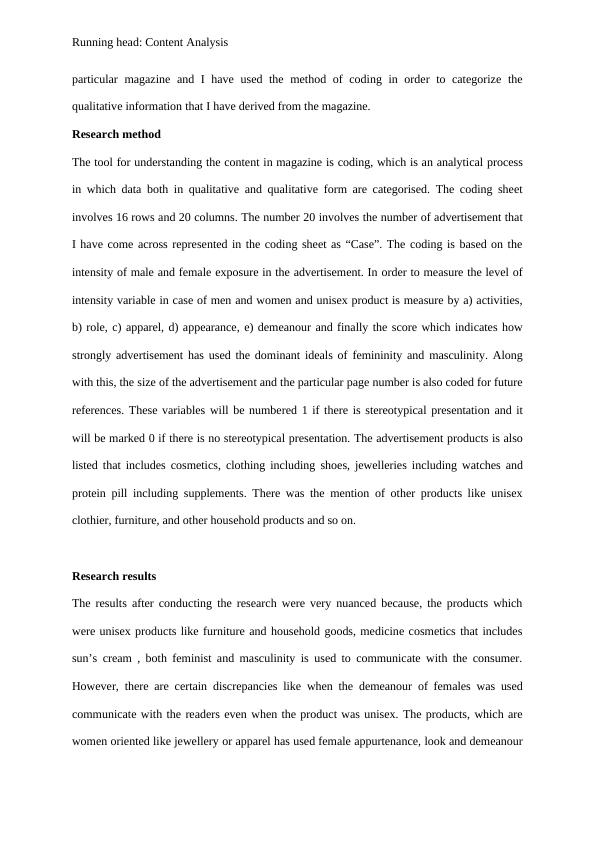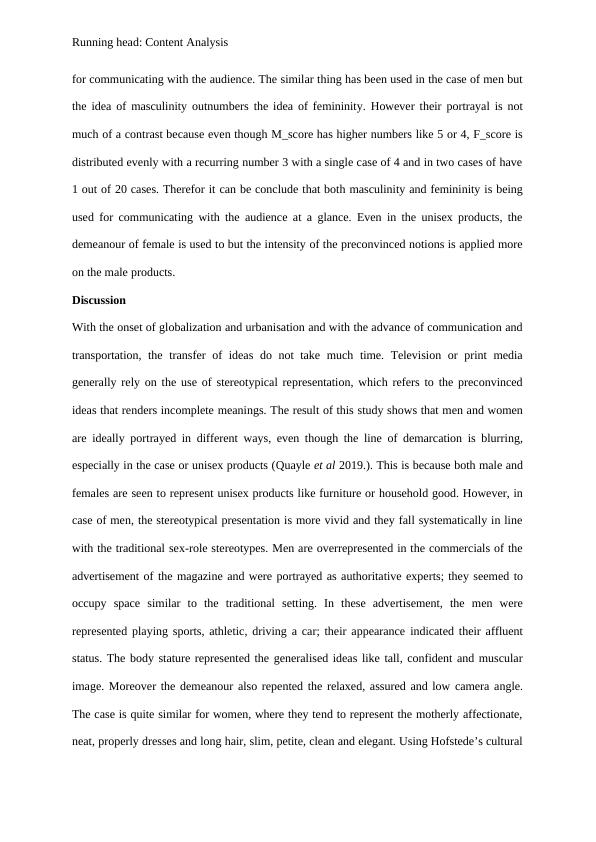Gender Stereotypes in Magazine Advertisements: A Content Analysis
Research the representation of gender in magazine advertisements and answer the research question: 'do magazine advertisements use dominant ideals of femininity to sell products to women and dominant ideals of masculinity to sell products to men?'
6 Pages1627 Words256 Views
Added on 2023-03-31
About This Document
This research examines the use of gender stereotypes in magazine advertisements, focusing on the portrayal of femininity and masculinity. The study analyzes a health magazine targeted towards women over 40, using content analysis to categorize the qualitative information. The results reveal nuanced findings, with both femininity and masculinity being used to sell products, particularly in the case of unisex items. However, there is a greater emphasis on stereotypical presentations of men. The discussion highlights the impact of advertising on gender roles and identity formation, questioning the ability of media channels to break traditional norms. Overall, the study emphasizes the persistence of gender stereotypes in magazine advertisements.
Gender Stereotypes in Magazine Advertisements: A Content Analysis
Research the representation of gender in magazine advertisements and answer the research question: 'do magazine advertisements use dominant ideals of femininity to sell products to women and dominant ideals of masculinity to sell products to men?'
Added on 2023-03-31
ShareRelated Documents
End of preview
Want to access all the pages? Upload your documents or become a member.
The Effects of Gender Stereotypes on the Development of Gender Identity and Role Awareness in Children
|11
|3170
|32
Changing Gender Roles in Media | Discussion
|10
|2423
|16
Gender Communication: Understanding the Differences and Stereotypes
|3
|659
|242
Criminology | Concept of Hegemonic Masculinity
|10
|2461
|28
Race, Class and Gender in Criminology
|3
|611
|307
Anneke Smelik's Feminist Film Theory: Analysis of Sally Potter's Orlando
|8
|2278
|423



